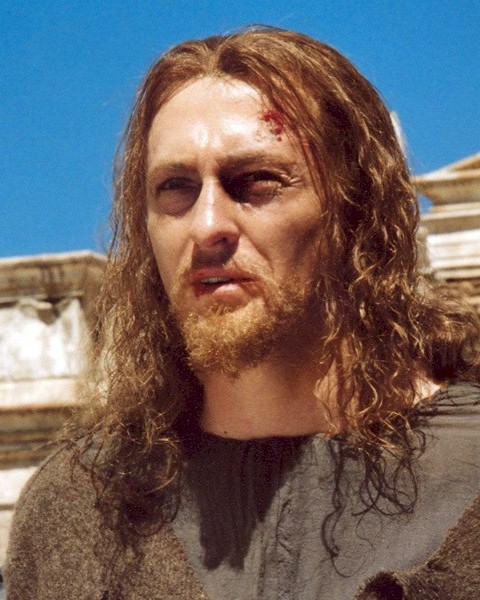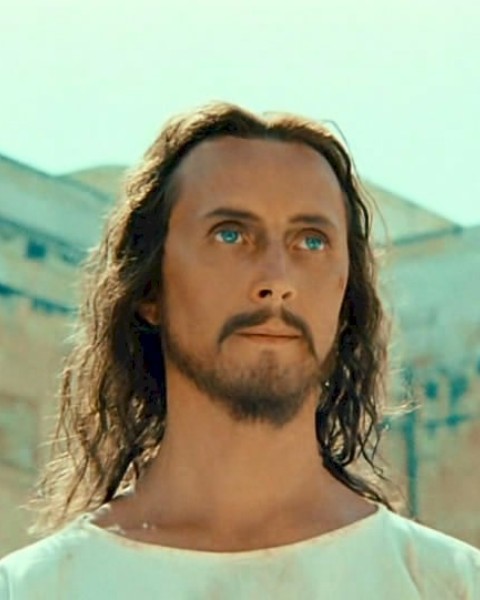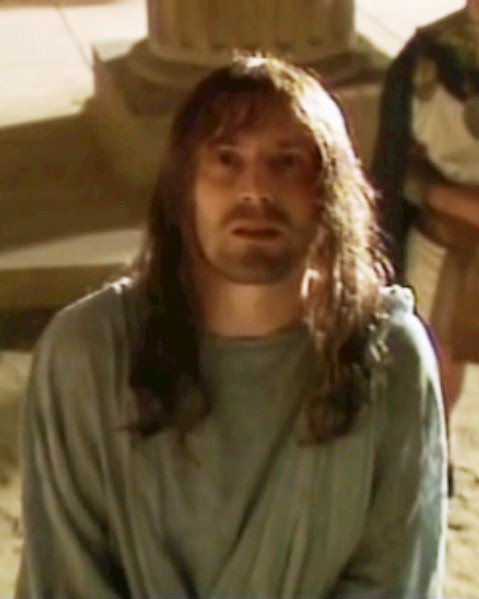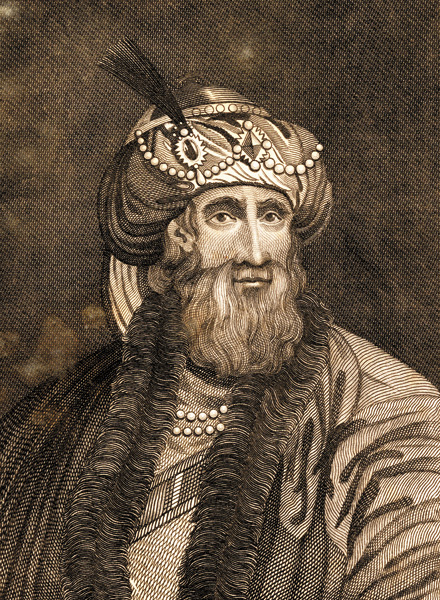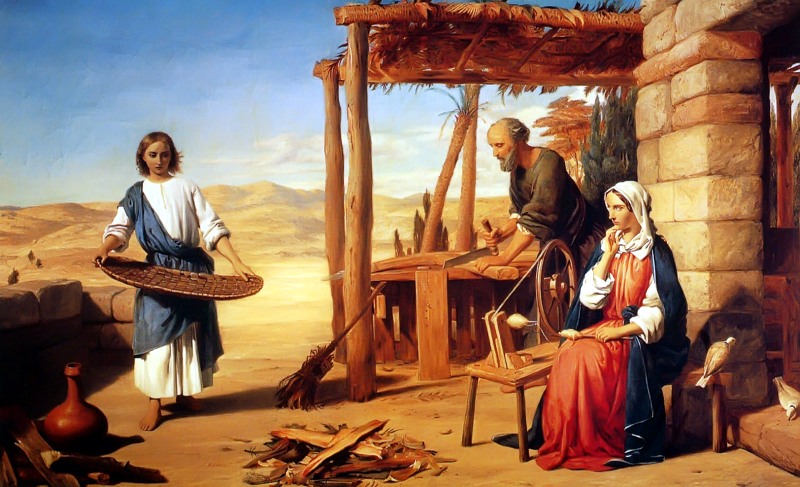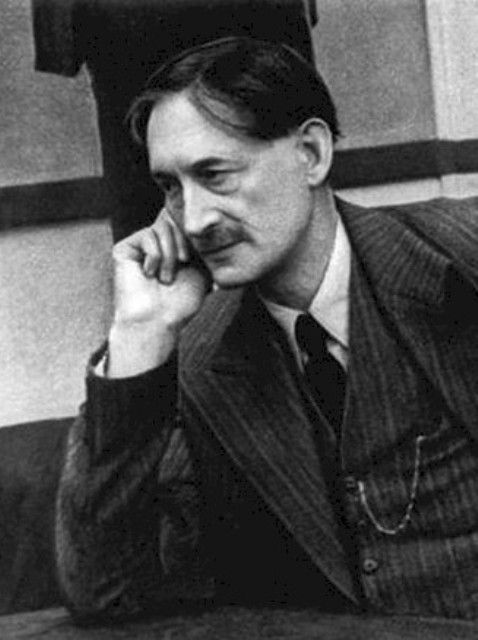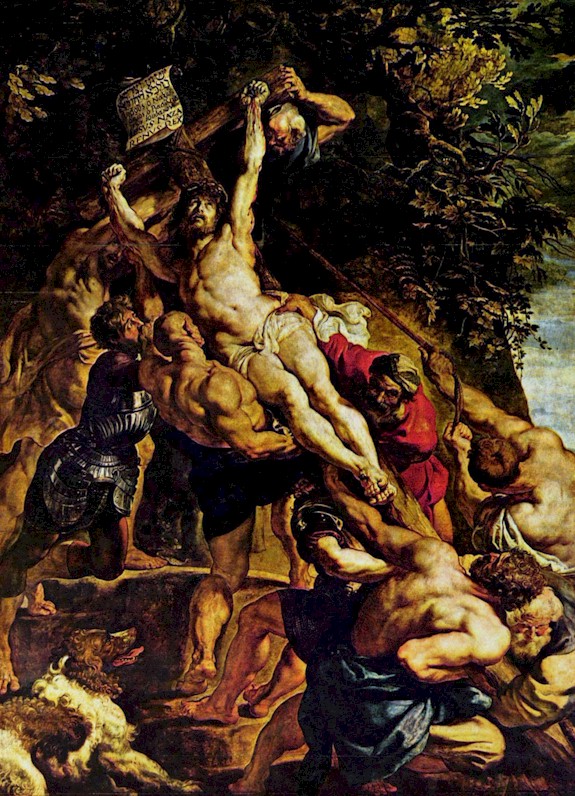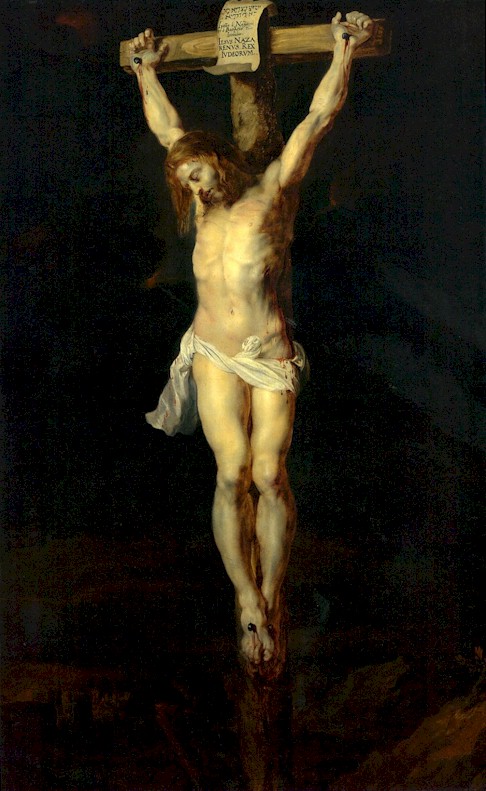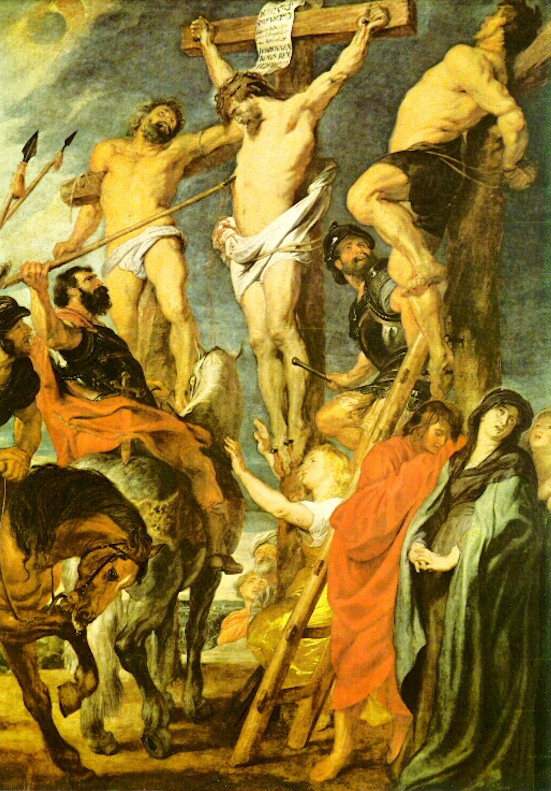Yeshua Ha-Nozri
English > Characters > Biblical characters > Yeshua Ha-Nozri
Context
The story of Yeshua Ha-Nozri and his death in The Master and Margarita is based on the story of Jesus of Nazareth (0-33), which is described in the so-called canonical gospels.
A gospel is a written account of the life and teachings of Jesus of Nazareth. The word gospel is a translation of the Greek εὐαγγέλιον [euangelion] or good news. In Old English, it was translated as gōdspel, a contraction of gōd (good) and spel (news). The Old English term was retained as gospel in Middle English Bible translations and hence remains in use also in Modern English. Other languages are using transliterations of the greek word εὐαγγέλιον, like evangelie (Dutch), évangile (French), Evangelium (German) and евангелие [evangelie] (Russian).
There are dozens of gospels - I have counted 64 of them so far -, most of which have been written between the years 70 and 185. However, the form and content of these texts differed strongly.
The differences between the gospels were even so huge that Athanasius (293-373), the bishop of Alexandria, decided to «put things in order» in 367. He made a dinstinction between «gospels inspired by God» or canonical gospels on the one hand, and on the other hand the other texts, called apocryphal gospels. By doing so, he defined the Alexandrian Canon, a list of «Bible books inspired by God» which corresponds to the Old Testament and the New Testament as we know them today.
An important part of the New Testament are the four canonical gospels of Matthew (written between 70 and 90), Mark (between 66 and 73), Luke (between 60 and 130) and John (between 90 and 110). In 382, under Pope Damasus (305-384), the list of Athanasius was finally approved as the so-called Damasus List. Most apocryphal texts were no longer to be read from that time on.
However, by this decision the apocryphal gospels did not disappear. Today we still now the gospels written by Peter, Judas, Thomas, Nicodemus, Philippus, Bartholomew, Philip, Thaddeus and many more, even a gospel by Mary Magdalene. The latter became more widely known in 2003 by the novel Da Vinci Code from the American author Dan Brown.
In order to write the biblical scenes of The Master and Margarita, Bulgakov based himself, inter alia, on the canonical gospel of Matthew, but also on the apocryphal gospel of Nicodemus (probably from the 4th century), the first part of which is known as The Acts of Pilate, and concentrates on the agony of Jesus.
Prototype
The name ישוע הנצרי [Yeshua Ha-Nozri] is Aramaic and means Jesus of Nazareth. The Aramaic was at the time the lingua franca of the Middle East, and therefore also of Palestine. Yeshua means The Lord is blessed, and Nazareth is the city in Galilee where, according to the canonical gospels, Jesus lived before he began his public life.
It is still a point of discussion whether the person Jesus of Nazareth has really existed. Mikhail Berlioz is right when he says in the opening scene of The Master and Margarita that there are few historical sources outside the bible which refer to him. Among others, he mentioned Publius Cornelius Tacitus (56-117), and his work Annals, book XV, chapter 44, in which he writes about the Christians: «Christus, from whom the name had its origin, suffered the extreme penalty during the reign of Tiberius at the hands of one of our procurators, Pontius Pilatus».
But Berlioz violates the truth when he says that «the brilliantly educated Flavius Josephus never said a word about the existence of Jesus». Between 79 and 94, Titus Flavius Josephus (37-100), with his real name Yosef ben Matityahu, wrote the story Antiquities of the Jews which consisted of 20 volumes. In book XVIII, chapter 3 of this work there is a passage known as Testimonium Flavianum or The testimony of Flavius, in which he wrote: «Now there was about this time Jesus, a wise man, if it be lawful to call him a man; for he was a doer of wonderful works, a teacher of such men as receive the truth with pleasure». He also mentioned the death on the cross and the resurrection. However, the reliability of this text has been disputed since the 17th century, and many scribes agree that it is at least altered or even completely falsified by Christian writers.
Personality traits
In the absence of sources outside the bible, we can only compare the character of Yeshua Ha-Nozri from The Master and Margarita with the image of the character of Jesus of Nazareth from the four canonical gospels, and from the apocryphal gospel of Nicodemus, which Bulgakov had thoroughly studied in function of the novel.
Before, however, it must be said that the four gospels are not unanimous in describing the personality of Jesus.
For example, the evangelist Matthew, who himself was Jewish and whose writings were specifically intended for a Jewish audience - his gospel was written in Hebrew -, presented Jesus as the «son of David», the «promised king» and the «fulfillment of the messianic prophecy». Therefore, as a future ruler, his Jesus is a vigorous character who heavily challenges the high priests, who inspires awe, and who is not afraid of any authority, including Pilate. In the gospel of Matthew (27:11) we read: «Meanwhile Jesus stood before the governor, and the governor asked him, 'Are you the king of the Jews?' 'You have said so,' Jesus replied ». In several other places in that gospel Jesus also denounces the hypocrisy of the then Jewish leaders and parties.
This image is very different from the man described by Mikhail Bulgakov. His Yeshua tried to escape from the accusation, he replied that the people haven't any learning and have confused everything he told them: «No, no, hegemon, there's one with a goatskin parchment who follows me, follows me and keeps writing all the time. But once I peeked into this parchment and was horrified. I said decidedly nothing of what's written there».
Bulgakov's Yeshua character is sometimes funny, sometimes cowardly, sometimes manipulative. He pretends that he did not want all the noise he had created himself. He shows many human weaknesses, and is therefore very different from the Jesus described by the evangelist John, who, in writing his gospel, envisioned a multicultural and multireligious audience living in the Egyptian city of Alexandria, and who emphasized especially the deity and perfection of Jesus. But Yeshua is weaker and more capricious. He uses his divinity to perform a miracle by releasing Pilate from his headaches, but then begs to be released, for he fears «they want to kill him».
Gamala or Nazareth?
But Yeshua Ha-Nozri does not only derogate from the Jesus of Nazareth in the gospels as far as his personality is concerned. Some facts described by Mikhail Bulgakov are also different from what is written in the gospels of Matthew, Mark, Luke, John or Nicodemus.
By the way, Bulgakov assumes hat the reader knows the bible a bit, though he uses, unlike the evangelists, often the Aramaic names, which are historically more accurate: Yeshua instead of Jesus, Yershalahim instead of Jerusalem, Yehudah instead of Judas.
According to the gospel of Luke, Jesus spent his childhood in the town of Nazareth, in the region of Galilee, with his mother Mary and his foster father Joseph - together, they are often called the Holy Family. Bulgakov mentions two places in connection with the home of his Yeshua. In chapter 2, Yeshua explains to Pilate not only that he did not remember his parents, but also that he came from the town of Gamala, and «indicates with his head that there, somewhere far off to his right, in the north, is the town of Gamala». Gamala is a town northeast of Tiberias on the Sea of Galilee. In 1927, shortly before Bulgakov would start writing The Master and Margarita, the French writer Henri Barbusse (1873-1935) had written the book Jésus (Jesus), in wich he argued that Jesus must have lived in Gamala. Barbusse was known in the Soviet Union because he was a supporter of communism. He had done research on Nazareth, because nowhere in the Old Testament textual references are given to this city, and many historians doubted whether the city of Nazareth has really ever existed at that time.
In three of the earlier versions of The Master and Margarita, Yeshua said that he was not from Gamala, but from Эн-Назира [En-Nazira], «pointing his hand in the distance». En-Nazira is the Russian transliteration of النَّاصِرَة [an-Nāṣira], the Arabic name for Nazareth. Viktor Ivanovich Losev (°1939), the compiler of My poor poor master, a book in which all saved versions of The Master and Margarita are brought together chronologically, suggests that Bulgakov may have found the name En-Nazira in Life of Christ (1874), a book by Frederic Farrar (1851-1905). But neither Farrar, nor the biblical expert Alexander Pavlovich Lopuchin (1852-1904), who translated Life of Christ into Russian in 1887, mentioned the name En-Nazira in their works.
Bulgakov may have found the name En-Nazira in a work he often used as a source of inspiration while writing The Master and Margarita, namely the Энциклопедический словарь Брокгауза и Ефрона [Entsiklopedesky slovar Brokhauza i Efrona] or the Brockhaus and Efron Encyclopedic Dictionary, a work of 86 volumes, which can be considered as the Russian equivalent for the Encyclopaedia Brittanica. Under the keyword Назарет [Nazaret] it mentions the Arabic name En-Nazira.
In the second-to-last version of the novel, Yeshua said that he was from Эн-Сарид [En-Sarid], and «indicates with his head that there, somewhere far off to his right, in the north, is the town of En-Sarid». That would also indicate Nazareth, according to many Russian philologists, although I have not found any sources confirming it. In the final version of The Master and Margarita En-Sarid became Gamala, but Bulgakov may not have found the time to look at it thoroughly, because in chapter 26 of the final version Yeshua is still described as нищий из Эн-Сарида [nishchni iz En-Sarida] or the beggar from En-Sarid.
Pedigree and family
In The Master and Margarita Yeshua says: «I don't remember my parents. I was told that my father was a Syrian». Once again, Bulgakov differs significantly from the canonical evangelists who wrote that Jesus' mother Mary was still alive when he was executed, so he knew her well when he appeared before Pilate. Maria would have conceived Jesus immaculately, without having had intercourse with her fiance Joseph of Nazareth. Matthew and Luke wrote that Joseph was a descendant of King David (1040BC-970BC) who, according to the Hebrew bible, was the second king of the United Kingdom of Israel. Joseph was a carpenter by profession. He was last time mentioned in the Bible when Jesus was 12 years old. During Jesus' public life, he is not mentioned, leading many to assume that he was already deceased.
According to the Bible, Jesus also had brothers and sisters. His four brothers are mentioned by their names as James, Joseph, Simon and Judas, but his sisters are not named. Only in the apocryphal gospel of Philip is written about «his sister who was called Mary, just like his mother and his companion [Mary Magdalene]». Some Christians who believe in the perpetual virginity of Mary, say that Jesus had no real brothers and sisters, but that they were children born from a previous marriage of Joseph.
The death of Yeshua is also described differently. In The Master and Margarita, Yeshua died after the executioner «gently pricked Yeshua in the heart» with his spear. In the Gospel of John (19: 33-34), however, we read that the soldiers had noticed that he had died, and that his side was pierced by a spear to verify whether he was really dead.
In chapter 16 of the novel, when the executioner gently pricked him in the heart, Yeshua twitched and whispered: «Hegemon…». This version of Yeshua’s last words is also quite different from what the gospels said. According to Matthew (27: 46), (Mark 15:33) and the apocryphal gospel of Nicodemus (VIII, 3), Jesus cried out in a loud voice, saying: «Ηλει ηλει λεμα σαβαχθανι?» [Eli, Eli, lama sabakhthani] or «My God, my God, why have you forsaken me?». This phrase by Jesus is a quote from King David (1040 BC-970 BC) taken from the book of Psalms, chapter 22. The other evangelists describe quite different words. Luke (23:43-46) wrote that Jesus had cried out in a loud voice, saying: «Father, into thy hands I commend my spirit» and according to John (19: 30), Jesus said, «It is finished» when he had received the drink.
Furthermore, in The Master and Margarita is told that Matthew Levi stole the body of Yeshua to bury it, but in John (19:38) we can read: «Joseph of Arimathea asked Pilate for the body of Jesus. Now Joseph was a disciple of Jesus, but secretly because he feared the Jewish leaders. With Pilate’s permission, he came and took the body away».
In the novel, Yeshua has only one follower, Matthew Levi, even somewhat against his will. However, in the gospels it is said that Jesus had twelve apostles or disciples whom he had selected himself and who constantly accompanied him. One of those twelve was Judas Iscariot, who would later betray him for thirty silver coins. The Judas of Bulgakov is called Yehuda from Kiriath. But he was not a pupil of Yeshua. He only met him two days before the questioning of Yeshua by Pilate, and received thirty tetradrachms for his betrayal, which is considerably more than thirty silver coins. According to the gospel of Matthew (27:3-6), Judas Iscariot repented, returned his silver coins to the high priests, and hung himself.
The latter is firmly denied in The Master and Margarita. In Chapter 26, Pilate asks Aphranius:«It suddenly occurs to me: might he not have killed himself?» Whereupon Afranius replied that such thought was «entirely unlikely». Bulgakov's Yehuda did not hang himself, but was murdered near the cave in Gethsemane - Pilate claimed to have done it himself - and his murderers threw the money over the fence of the high priest Kaifa with a note saying: «I return the cursed money».
Satire
The biblical story of The Master and Margarita also contains quite some satirical thoughts on the Soviet Union. There are many references to the Soviet system. Caesarea Stratonova, the residence of Pilate on the Mediterranean Sea, refers to the luxury dachas of the Sovjet apparatshiks, while the progress of the establishment of the ratification of Yeshua's death penalty reminds of the arranged interrogations and verdicts in the Stalin era. The investigations and the manipulative constructions of Aphranius closely resemble the activities of the secret service NKVD, including the rewriting of history and the development of a propaganda strategy.
Share this page |
Biblical characters
Illustrations
Sergey Bezrukov as Yeshua
(Vladimir Bortko - 2005)
Nikolay Burlyaev as Yeshua
(Yuri Kara - 1994)
Tadeusz Bradecki as Yeshua
(Maciej Wojtyszko - 1990)
Titus Flavius Josephus
The Holy Family in Nazareth
John Rogers Herbert (1530)
Henri Barbusse
The crucifixion of Christ
Pieter Paul Rubens (1610)
Christ on the cross
Pieter Paul Rubens (1610-1612)
The stab of the lance
Pieter Paul Rubens (1619)
